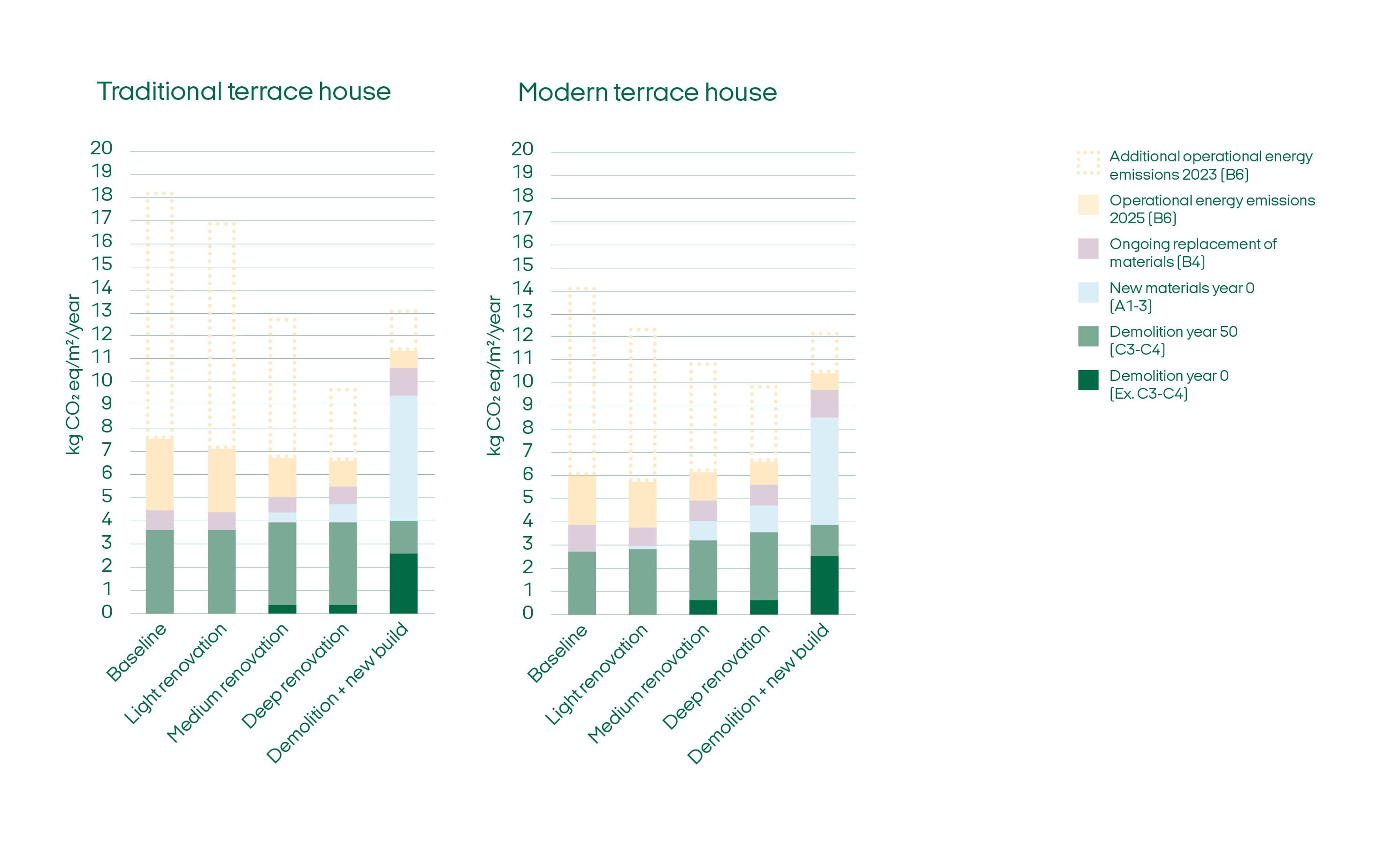Major Danish project reveals how to renovate in a climate-friendly way
It is widely recognised that it is almost always better for the climate to renovate rather than demolish and start over with new construction. But how do we renovate in the most climate-friendly way? A large, interdisciplinary project now provides answers.
When it comes to new building projects, there is a strong focus on building in a climate-friendly way. Shared databanks, calculation methods and climate requirements have been developed.
However, when it comes to renovation, similar tools are missing, even though renovations account for a significant amount of building activity in Denmark, and that we plan to focus on conserving and renovating even more in the coming years.
The Danish philanthropic organisation Realdania has therefore launched a project aimed at increasing knowledge, developing shared methods, and generating shared data to strengthen the entire construction industry's ability to perform more comparable assessments of the climate impact of different renovation scenarios from a lifecycle perspective.
The results of this project have now been compiled and published in a report entitled 'Renovering er bedst for klimaet’ ('Renovation is better for the climate’), as well as in the more technical background report: 'Klimadata for renovering’ ('Climate data for renovation').
The reports present new knowledge about how to renovate in a way that is better for the climate, and which also makes the most sense from an economic perspective. This knowledge means that along with the construction industry, politicians can now make decisions about conservation and renovation on a more informed basis.
'Until now, we have had little knowledge about how to renovate in the most climate-friendly way, but in this project, calculations of the climate impact have been made for various renovation scenarios covering a number of different building types. The clear conclusion is that renovation is better for the climate and that in a lifecycle perspective even minor renovations are better than demolishing and building anew,' says Thomas Waras Brogren, Project Manager at Realdania, and continues:
'The project group has also calculated the financial aspects of a number of renovation scenarios, and these results show that in the long run renovation is often a more favourable overall economic solution than building anew. Therefore, we can say that renovations will often give the best value for money in terms of climate impact.'
New Emission Factors
Calculations in the reports are based on the Danish 2025 emission factors that will be used for LCA-calculations in the future. They differ significantly from the 2023 emission factors that currently apply, because we expect that our energy sources will have lower CO2-emissions in the future than they do today.
'With the new Danish emission factors, there will inevitably be a greater focus on not only reducing operational energy costs, but also on reducing the climate impact of building materials and the construction process itself. Because we want to reduce climate impact now, rather than years from now, the timing of emissions may well be one of the factors that will receive more focus in the future. It may also become increasingly relevant to use more biogenic building materials. All of this will affect the way we conserve and renovate buildings in the future,' concludes Thomas Waras Brogren.

In the project ‘Klimadata for renovering’ (Climate Data for Renovation), LCA comparisons were made between different building types and renovation scenarios. The results show that, as Denmark transitions to greener energy production, preserving and renovating buildings – even with light renovations – has a lower climate impact than demolishing and constructing new ones. The dotted columns in the data represent the climate impact from operational energy use under the previous, more polluting energy production system.
The Aesthetics of Climate-Friendly Architecture
The reports also offer suggestions about how future climate-conscious renovations will affect architecture. In particular, some of the elements highlighted that could affect future renovations are the use of biogenic materials such as wood and cork, as well as cautious renovation, in which only the most necessary parts are replaced.

The Danish project illustrates what future climate-friendly renovations might look like by using biogenic materials and making only essential replacements. With a greater emphasis on climate-conscious renovation, there could be a shift towards showcasing repairs and natural wear (patina) rather than hiding them.
The reports provide an overview of how the EU and specifically Finland, Norway, Sweden, France, the Netherlands, and the UK are working with climate requirements and renovation.
In addition, they contain new knowledge on several topics that could have a major impact on future climate-focused renovations. These include suggestions for considering factors such as: performance inadequacies for buildings already in operation; different models for calculating CO2 shadow costs of construction projects; how residual lifespans can be determined; and dynamic LCA, in which earlier emissions carry greater weight compared to later emissions.
The Reports
The project's background data and LCA-files are available for anyone interested to explore and use.
Find the results report here:
Renovering er bedst for klimaet (realdania.dk)
And the background report:
Klimadata for renovering (realdania.dk)
A wide range of specialists from Arkitema, Cowi, BUILD and the Danish Council for Building Sustainably have collaborated in taking a close look at future climate-friendly renovations.
An advisory group of sixty people from the Danish construction industry have followed the project, contributing input on various options, and new perspectives on climate-friendly renovation.
